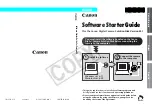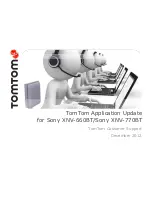
Introduction to SCF for the SNMP Agent
SNMP Configuration and Management Manual — 424777-006
4- 22
SCF Commands for Managing a Subsystem
Examples of other SCF commands that pertain only to the current SCF session:
•
The SYSTEM and VOLUME commands identify the default system, volume, and
subvolume names used for expanding file names.
•
The OBEY and OUT commands identify the files used for command input and
display output.
•
The ASSUME command defines a default object to be used when the object is
omitted from an SCF command.
•
The ENV command displays the current settings of the SCF command parameters
that establish the program environment.
SCF commands that pertain only to the SCF session appear in the
SCF Reference
Manual for G-Series Releases
.
SCF Commands for Managing a Subsystem
To issue a command to manage components of a subsystem, follow the command with
an object type and an object name. For example, the following STATUS command
displays the state of the NonStop agent TRAPDEST object named $ZSNMP.#TRAP:
-> STATUS TRAPDEST $ZSNMP.#TRAP
SNMP Status TRAPDEST
Name State
$ZSNMP.#TRAP STARTED
When including command modifiers (options that affect the scope of the command) or
object attributes (to define characteristics of an object), separate each keyword-value
pair from the object name with a comma. For example:
-> INFO PROCESS $ZSNMP, SUB All, DETAIL
-> ADD TRAPDEST $ZSNMP.#TRAP, HOSTADDR "130.252.85.199"
Examples of other SCF commands used to manage subsystem objects:
•
The ADD and DELETE commands, which add and delete object configurations to
and from the SCF sphere of control for a particular subsystem.
•
The START, STOP, and ABORT commands, which cause a configured object to
become active or inactive; and the ALTER command, which changes the
configuration of an object.
•
The INFO command, which displays the current configuration values for an object.
•
The STATUS command, which displays the current operational state of an object.
Note.
You do not explicitly indicate SCF the subsystem with which you are communicating.
SCF determines the subsystem by interpreting the object type and object name you supply in
the command line.
Summary of Contents for T9576G06
Page 24: ...Contents SNMP Configuration and Management Manual 424777 006 xxii Tables continued ...
Page 38: ...Part I Installing and Configuring SNMP SNMP Configuration and Management Manual 424777 006 ...
Page 140: ...Part II SCF for the SNMP Agent SNMP Configuration and Management Manual 424777 006 ...
Page 208: ...Part III Troubleshooting SNMP Configuration and Management Manual 424777 006 ...
Page 230: ...Part IV SNMP Subagents SNMP Configuration and Management Manual 424777 006 ...
Page 704: ...Part V Appendices SNMP Configuration and Management Manual 424777 006 ...
Page 778: ...Index SNMP Configuration and Management Manual 424777 006 Index 32 Special Characters ...
















































